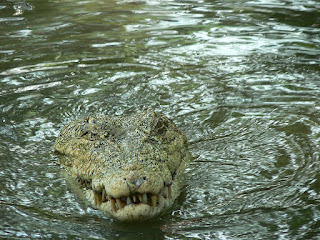SALIENT FEATURE OF BHITARAKANIKA WILDLIFE SANCTUARY
The Bhitarakanika is one of the largest ecological hotspot of india and it is located in the Kendrapada district of Odisha . it is famous for Baula crocodiles and it constitute toward the major coastal ecosystem of India. It is declared as a National pack - due to its richness of Boi-diversity and in 2012 it got the recognition of Ramsar site in Odisha .
In 1975 it was declared as wildlife sanctuary by the local government .
BIOSPHERE RESERVED
This wild life sanctuary is dominated by delta of Brahmani river - the delta also contributed by River Mahanadi, Baitarani and The Dhamara river . This area is coming under the Kendrapada district of odisha and it is a multiclimatic area .
The Kanika and kujung zajidari area is coming under the Bhitarakanika Biosphere reserve . It include three protected area- Such as Bhitarakanika wildlife sanctuary , Bhitarakanika National Park, and Gahirmatha marine wildlife. The Bhitarakanika is one of the India's largest salt water crocodile habitat and major coastal ecosystem.
The mangrove forest is not only dominating this boisphere reserve also different tyoes of other plant and different funal species are making rich the biodiversity ecosystem. The excessive salinity - is a major reason for the death of other plant and animals- due to this only salt resistance animals and plants are able to survive in this environment .
MORE ABOUT BHITARAKANIKA
This ecosystem provides shelter to largest numbers of salt water crocodile in Indian subcontinent .
- Bhitarakanika Famous for Gahirmatha Coast - Which is a prominent coast /place for turtles India and also in the world because every year millions of turtles has been coming for egg laying .
BHITARAKANIKA WILD LIFE SANCTUARY
Forest Division- Mangrove Forest Division ( WL) Rajnagar
District - Kendrapara
Area- 672 sq Km
Date of Notification- 22-4-1975
HOW TO REACH TO BHITARAKANIKA
BYROAD- The area is accessible by road is via Rajnagar and Chandabali
BY TRAIN-The nearest railway station is cuttack and Bhadrak which are 130 km away from the rajnagar and 60 km away from the Chandabali respectively.
BY AIR- Nearest airport is Bhubaneswar Airport and which is 130 km awasy from the Rajnagar and 180 km away from the chandabali.




